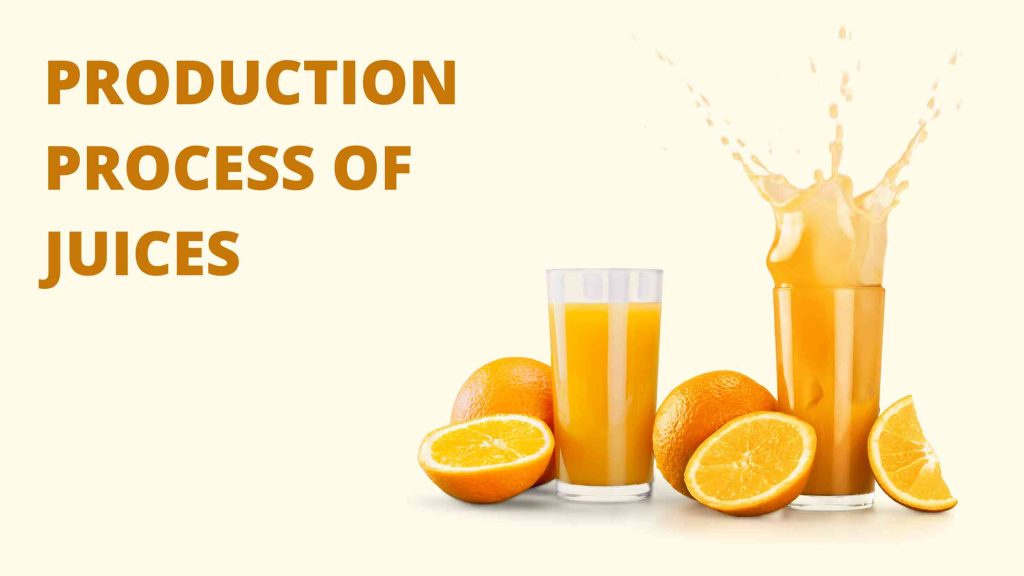Fruit juice production has shown volatile tendencies during the last few years. In 2020/21, production amounted to around 230,000 metric tons at 65 degrees Brix. Since 2019, sales of fruit juice drinks in the U.S. have been increasing: Sales reached almost 1.4 million 192-oz cases in 2021 and had grown from 694 million cases in 2014.
The Juice Production industry in the U.S. was the 118th largest manufacturing industry by market size and 477th overall. The market size of the Juice Production industry increased faster than its parent sector, Manufacturing. Low industry assistance and high competition are negative factors affecting this industry.
Juice Production Process
- Fruit mash heating or cooling
- Mash Buffering before pressing mash
- Juice Pressing
- Heating and Aroma Recovery Section
- Ultrafiltration Process
- Clear Juice concentration process
- preparing mixture solutions from production batches available in stock
- process in tanks
- Pasteurization of juices and juice concentrations.
Juice Storage and Distribution Process
- Juices and juice concentrates direct storing
- Elimination of alicyclobacillus bacteria
- Distribution of ready products to the tank truck
- Cleaning of installation and piping.
The juice production process typically involves specific steps depending on the juice produced. However, here is a general overview of the juice production process:
Raw Material Selection:
The first step is to select high-quality fruits or vegetables, depending on the type of juice. The fruits or vegetables should be ripe and free from any defects.
Washing and Sorting:
The selected fruits or vegetables are thoroughly washed to remove dirt, debris, and surface contaminants. They are then sorted to remove damaged or spoiled pieces.
Peeling and Cutting:
Sometimes, the outer skin or peel of the fruits or vegetables is removed. It is often done using specialized peeling machines. The peeled fruits or vegetables are cut into smaller pieces to facilitate extraction.
Extraction:
The extraction process involves obtaining juice from the prepared fruits or vegetables. It can be done through different methods, such as pressing, crushing, or grinding. The most common way is mechanical extraction using juice extractors or presses.
Filtration:
Once the juice is extracted, it is typically passed through a filtration system to remove any pulp, seeds, or solid particles. It helps in achieving a smooth and clear juice consistency.
Pasteurization:
It is often pasteurized to ensure the safe shelf life of the juices. Pasteurization involves heating the fluid to a specific temperature for a certain period to kill harmful microorganisms without significantly affecting its taste or nutritional value.
Blending (Optional):
Depending on the desired flavor profile, different batches of juice may be blended to achieve a consistent taste. It is widespread for juice blends or when producing juices from concentrate.
Addition of Preservatives or Additives (Optional):
Some juice manufacturers may choose to add preservatives or additives to enhance the flavor, improve shelf life, or maintain the color and texture of the juice. However, many consumers prefer juices without these additives.
Packaging:
The final step involves packaging the juice into containers, such as bottles, cartons, or pouches. The containers are typically sterilized before filling to maintain the quality and safety of the liquid. Proper labeling and branding are also applied to the packaging.
Quality Control:
Quality control measures are implemented throughout production to ensure the juice meets the required standards. It includes regular testing for taste, color, acidity, sugar content, and microbial activity.
It’s worth mentioning that the specific details of the juice production process may vary depending on the manufacturer, the type of juice being produced, and any specific regulations or standards in place.
How Acumatica ERP can enhance the juice production business
Acumatica ERP offers significant advantages for juice production businesses, allowing them to streamline operations and enhance efficiency. With its robust features and functionality, Acumatica provides a comprehensive solution to manage various aspects of the juice production process. Acumatica enables businesses to optimize their supply chain and reduce costs, from inventory management and procurement to Manufacturing and distribution.
One of the critical benefits of Acumatica ERP for juice production is its ability to integrate and consolidate data from different departments and locations. This centralized system ensures real-time visibility into inventory levels, raw material availability, and production schedules, enabling businesses to make informed decisions and avoid stockouts or delays. Companies can maintain optimal inventory levels by efficiently managing the procurement process while minimizing waste and spoilage.
Additionally, Acumatica ERP enables effective production planning and scheduling. With its advanced forecasting and demand planning capabilities, businesses can accurately estimate customer demand and align their production accordingly. It helps optimize resource utilization and reduce production bottlenecks, improving productivity and on-time delivery.
Furthermore, Acumatica’s quality control features allow businesses to monitor and maintain the highest standards throughout production. It facilitates the implementation of quality checks at various stages, ensuring that only superior-quality juices reach the customers. It enhances customer satisfaction and helps build a strong brand reputation.
Moreover, Acumatica’s reporting and analytics capabilities provide a valuable understanding of KPIs such as production efficiency, yield, and profitability. This data-driven approach empowers businesses to identify areas for improvement, optimize processes, and drive continuous growth.
In conclusion, Acumatica ERP offers a comprehensive solution to enhance the juice production business. Acumatica enables enterprises to increase efficiency, improve product quality, and achieve sustainable growth in the competitive juice industry by streamlining operations, optimizing supply chain management, and providing real-time visibility.

Sangeetha brings 20 years of experience in Information Technology which includes Solution architecting, building micro services, research, and evaluation of business applications, integrating apps.

